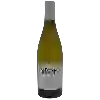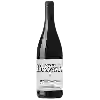
Winery Mas JaumeCôtes du Roussillon Villages
This wine generally goes well with beef, veal or pasta.
Food and wine pairings with Côtes du Roussillon Villages
Pairings that work perfectly with Côtes du Roussillon Villages
Original food and wine pairings with Côtes du Roussillon Villages
The Côtes du Roussillon Villages of Winery Mas Jaume matches generally quite well with dishes of beef, pasta or veal such as recipes of pork tongue with tomato sauce and pickles, express beef cannelloni or pork shank stew.
Details and technical informations about Winery Mas Jaume's Côtes du Roussillon Villages.
Discover the grape variety: Garonnet
Garonnet noir is a grape variety that originated in France. It is a variety resulting from a cross of the same species (interspecific hybridization). It produces a variety of grape specially used for wine making. It is rare to find this grape to eat on our tables. The Garonnet noir can be found in the vineyards of the Rhône Valley.
Informations about the Winery Mas Jaume
The Winery Mas Jaume is one of of the world's greatest estates. It offers 8 wines for sale in the of Côtes du Roussillon Villages to come and discover on site or to buy online.
The wine region of Côtes du Roussillon Villages
The wine region of Côtes du Roussillon Villages is located in the region of Côtes du Roussillon of Languedoc-Roussillon of France. Wineries and vineyards like the Domaine du Clos des Fées or the Domaine de Rombeau produce mainly wines red, white and pink. The most planted grape varieties in the region of Côtes du Roussillon Villages are Mourvèdre, Lledoner pelut and Pinot noir, they are then used in wines in blends or as a single variety. On the nose of Côtes du Roussillon Villages often reveals types of flavors of cherry, anise or black plum and sometimes also flavors of citrus fruit, tree fruit or fennel.
The wine region of Languedoc-Roussillon
Languedoc (formerly Coteaux du Languedoc) is a key appellation used in the Languedoc-Roussillon wine region of southern France. It covers Dry table wines of all three colors (red, white and rosé) from the entire region, but leaves Sweet and Sparkling wines to other more specialized appellations. About 75% of all Languedoc wines are red, with the remaining 25% split roughly down the middle between whites and rosés. The appellation covers most of the Languedoc region and almost a third of all the vineyards in France.
The word of the wine: Acidic (flavor)
Acidity is present in all wines, and is essential in white wines. It is due to the presence of different organic acids in the wine, and is expressed in the mouth by a sensation of freshness combined with other elements, such as minerality or a note of bitterness. Moderately present, it brings relief and vivacity to the wine.














